Low range pressure measurement sensing devices. Analog & digital output pressure sensors for measuring low range pressures.
Products
 DPS300 User Switchable Pressure Range, Volts or Current Output Low DP Sensor - The DPS 300 is a low range HVAC differential pressure sensor. The lowest possible pressure range is 0...100 pascals. 2 or 3 switchable pressure ranges, plus volts or current output are included with most standard configurations.
DPS300 User Switchable Pressure Range, Volts or Current Output Low DP Sensor - The DPS 300 is a low range HVAC differential pressure sensor. The lowest possible pressure range is 0...100 pascals. 2 or 3 switchable pressure ranges, plus volts or current output are included with most standard configurations. DMP457 Marine Approved Pressure Transmitter - Marine approved stainless steel diaphragm pressure transmitter with 4-20mA current loop output for shipbuilding in ranges from 100mb to 600 bar gauge or absolute.
DMP457 Marine Approved Pressure Transmitter - Marine approved stainless steel diaphragm pressure transmitter with 4-20mA current loop output for shipbuilding in ranges from 100mb to 600 bar gauge or absolute.
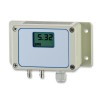 DPS200 HVAC Differential Pressure Transmitter
DPS200 HVAC Differential Pressure Transmitter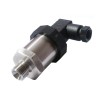 IMPLR Low Range All Stainless Steel OEM Pressure Sensor
IMPLR Low Range All Stainless Steel OEM Pressure Sensor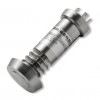 DMP331P Hygienic Flush Pressure Transmitter
DMP331P Hygienic Flush Pressure Transmitter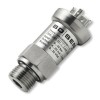 DMP331 Precision Pressure Transmitter
DMP331 Precision Pressure Transmitter
Applications
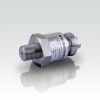 Low operating temperature plus/minus 1 psi pressure transmitter - Low range pressure transmitter with a bidirectional compound range from minus 1 to plus 1 psi gauge and low operating temperature of -40 degC.
Low operating temperature plus/minus 1 psi pressure transmitter - Low range pressure transmitter with a bidirectional compound range from minus 1 to plus 1 psi gauge and low operating temperature of -40 degC. Portable data acquisition trolley +/-20 kPa dp RS485 Modbus RTU interface air pressure sensor and display package - A digital display, pressure sensor and digital interface module package for use on portable data acquisition trolleys to measure pressure of air over a range of -20 to 20 kPa diff from two 6.6mm dia x 11mm barbed hose connections, and sending the corresponding reading via a RS485 Modbus RTU interface through the terminal block connector electrical connections.
Portable data acquisition trolley +/-20 kPa dp RS485 Modbus RTU interface air pressure sensor and display package - A digital display, pressure sensor and digital interface module package for use on portable data acquisition trolleys to measure pressure of air over a range of -20 to 20 kPa diff from two 6.6mm dia x 11mm barbed hose connections, and sending the corresponding reading via a RS485 Modbus RTU interface through the terminal block connector electrical connections.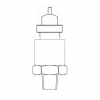 20 inH2Og range 4-20mA output natural gas pressure transducer for commercial generator use - An intrinsically safe low gauge range pressure transducer for use on commercial generators to measure pressure of natural gas over a range of 0 to 20 inH2O g from the 1/2 NPT male process connection, and sending the corresponding 4-20mA signal through the weatherproof cable electrical connection.
20 inH2Og range 4-20mA output natural gas pressure transducer for commercial generator use - An intrinsically safe low gauge range pressure transducer for use on commercial generators to measure pressure of natural gas over a range of 0 to 20 inH2O g from the 1/2 NPT male process connection, and sending the corresponding 4-20mA signal through the weatherproof cable electrical connection. Ethylene glycol antifreeze compatible 300 pascal dp sensor - 300 pascal differential pressure sensor for measuring ethylene glycol 50/50 antifreeze coolant.
Ethylene glycol antifreeze compatible 300 pascal dp sensor - 300 pascal differential pressure sensor for measuring ethylene glycol 50/50 antifreeze coolant.
 4 inch water column range 4-20mA differential pressure sensor for liquids
4 inch water column range 4-20mA differential pressure sensor for liquids -3 to 3 psi dp range high accuracy 4-20mA air pressure transmitter for water treatment use
-3 to 3 psi dp range high accuracy 4-20mA air pressure transmitter for water treatment use -200 to 200 Pa bi-directional range 4-20mA output dp pressure transmitter for venturi tube
-200 to 200 Pa bi-directional range 4-20mA output dp pressure transmitter for venturi tube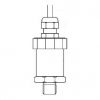 0-50 mbarg 4-20 mA output natural gas monitoring pressure sensor
0-50 mbarg 4-20 mA output natural gas monitoring pressure sensor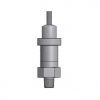 -2 to 2 inHg g 4-20mA out intake and exhaust air pressure sensor for building management use
-2 to 2 inHg g 4-20mA out intake and exhaust air pressure sensor for building management use -3 to 4 mbar dp range 4-20mA ATEX approved biogas pressure sensor for process control use on a 1bar line
-3 to 4 mbar dp range 4-20mA ATEX approved biogas pressure sensor for process control use on a 1bar line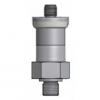 3 psig range 4-20mA output natural gas pressure sensor for building boiler heating use
3 psig range 4-20mA output natural gas pressure sensor for building boiler heating use -0.5 to +0.5 bar gauge 0-5 volts output compound range pressure sensor
-0.5 to +0.5 bar gauge 0-5 volts output compound range pressure sensor
- 10psig 4-20mA oily wastewater pressure sensor with hi-temp protection for tank level gauging use
- -0.1 to +0.1 inH2O g range 4-20mA signal air pressure sensor and display for pharmaceutical manufacturing use
- -5 to +5 psig bidirectional low range 0-5 volts output pressure sensor
- 10 psig 4-20mA out submersible freshwater pressure sensor for underwater structure research
- 1 mbar range 4-20mA output biogas pressure transmitter for controlling blower fan connected to a covered lagoon
- 1 inH2O differential intrinsically safe 4-20mA out air pressure sensor for HVAC use
- 0 to -200 mbar negative gauge suction range 4-20mA output stainless steel pressure sensor
- 5psig 0-10V out freshwater pressure transducer and built-in display for water purifier use
- 5 psi dp 0-10V out air pressure sensor for automation flow rate testing use on a 15psi line
- 800mbar absolute range 4-20mA output high temperature protected OEM pressure sensor
- -5 to +5 psi g low compound range 4 to 20 mA output OEM pressure sensor
- 3inH2O differential 4-20mA nitrogen pressure sensor and display for annealing furnace flow control use
Product Types
 Low Differential Pressure Transmitters - Low differential pressure transmitters for measuring small pressure differences between two measurement points on across ventilation fans, air filters or clean room walls.
Low Differential Pressure Transmitters - Low differential pressure transmitters for measuring small pressure differences between two measurement points on across ventilation fans, air filters or clean room walls. Draft Pressure Sensors - Low range pressure transducers and transmitters for measuring draft air pressure in air handling systems.
Draft Pressure Sensors - Low range pressure transducers and transmitters for measuring draft air pressure in air handling systems. Low Pressure Transmitters - Low pressure transmitters with 4 to 20 milliamp current output for measuring low level gauge, differential & absolute pressures below 1 bar (15 psi, 400 inWG or 1000 mbar).
Low Pressure Transmitters - Low pressure transmitters with 4 to 20 milliamp current output for measuring low level gauge, differential & absolute pressures below 1 bar (15 psi, 400 inWG or 1000 mbar).
Product Description
Measuring low range pressures is typically necessary on systems that transport air or gases such as building ventilation and factory dust or fume extraction.
In order to move air or gas from one place to another, a differential pressure difference needs to be created which causes movement in the direction of higher to lower pressure. Only a relatively small difference in pressure is needed to create sufficient movement of air or gas, which is a good thing because too high a differential would cause problems with noise and opening of doors in a workplace environment.
The size of low pressure measuring devices tends to be larger than equivalent higher range ones, this is because lower pressures produce less deformation in the sensing material, and therefore a larger surface area is required to maintain sensitivity of measurement. A thinner material is also used, but this is often limited by the technology and strength of the active material.
Due to the larger surface area and thinner sensing material used in low pressure sensing devices, it is necessary to downgrade the accuracy performance compared to higher ranges, because they are more sensitive to external environmental influences such as vibration and temperature changes.
Pressure units which are used to describe low pressure ranges include pascals (Pa), millibars (mbar, mb), hectopascals (hPa) or inches of water column (inH2O, inWC, inWG, “H2O, “WC, “WG).
Pressure sensors are measurement devices for detecting variations in pressure of liquids or gases. Typically a pressure sensor is made of two subcomponents, an electromechanical assembly on the frontend, and a signal conditioning module on the backend.
The frontend of the pressure sensor is connected directly via a thread or clamped seal to a pipe or vessel containing the liquid or gas to be measured. The pressure generated by the liquid or gas will apply a force to a sensitive exposed surface area within the electromechanical assembly which produces a physical change to the material, such as a deformation. This physical change is translated into an electrical change by smaller elements incorporated into the sensitive part of the assembly, typically on the reverse side of the surface in contact with the liquid or gas.
Since there are many different types of electromechanical technology used to measure pressure, producing very different electrical characteristics, it is necessary to add on a signal conditioning module to rationalise the electrical signal and convert it to one which is a commonly used standard within a particular industry or application.
